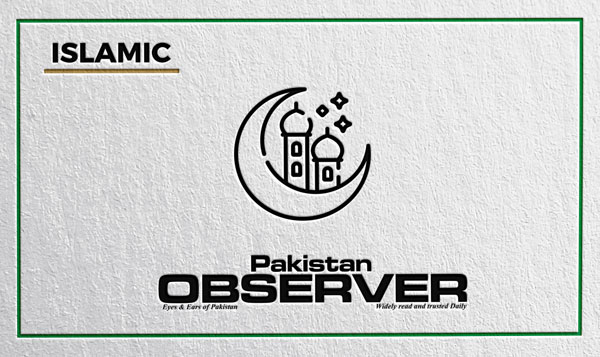By Salim Refas, Kate Hughes, Esmyra Javier, Bradley Hiller
Addressing the climate emergency will require all the funding possible from as many diverse sources as possible. Islamic climate finance instruments could help in Asia and in many other parts of the world.
The latest Intergovernmental Panel on Climate Change (IPCC) reports sounded an alarm that without urgent climate action, many parts of Asia and the Pacific may become unlivable within the next three decades. This warning builds on recent climate-related events, such as this year’s devastating floods in Pakistan and Asia’s hottest year on record in 2020, all of which threaten decades of economic and social development gains.
Every dollar that can be mobilized in the fight against climate change is needed. And there is a significant source of funds that has so far only reached a fraction of its climate potential: Islamic finance.
Since its inception in the 1970s, the faith-based Islamic finance industry has grown to almost $3 trillion globally, and its focus on tangible assets offers strong potential to support climate action. The Islamic finance industry is well established in parts of Asia and the Pacific, including Bangladesh, Brunei Darussalam, Indonesia, Malaysia, and Pakistan, which are amongst the leading countries in the Islamic finance industry globally.
However, there is significant untapped potential, particularly related to increasing household access to banking and increasing the penetration of Islamic capital markets and Islamic social finance products in some countries. For example, more than half of the populations of Azerbaijan, Bangladesh, Indonesia, Kyrgyz Republic, Pakistan and Tajikistan do not have an account at a financial institution, according to the global FINDEX database.
Beyond Islamic banking, the penetration of Islamic capital markets in many Asian countries remains small, and modern Islamic social finance products, especially for zakat (compulsory almsgiving) collection, donations (sadaqah), interest-free loans (qard) and endowments (awqaf) have not yet reached their potential. According to UNDP, zakat alone could help mobilize globally $200 billion to $1 trillion annually for the Sustainable Development Goal agenda.
The strategic importance of the climate change agenda for the Islamic finance industry has been recognized by faith leaders, development policy makers, academics and industry experts who jointly issued the Islamic Declaration on Global Climate Change in 2015 calling for a transition of the industry to a green and inclusive finance agenda.
Every dollar that can be mobilized in the fight against climate change is needed. And there is a significant source of funds that has so far only reached a fraction of its climate potential: Islamic finance.
Our research shows that development of Islamic climate finance should happen along four main channels: greening Islamic capital markets; greening Islamic social finance; mobilizing Islamic project finance for green infrastructure; and developing green banking services for the un-banked to support financial inclusion.
Targeted and staged policies and programs are required for each of these four channels, with differentiated country approaches depending on the maturity of the Islamic finance industry and the regulatory and market context.
In Malaysia and Indonesia for example, the successful introduction of environmental, social and governance (ESG)-themed funds and multiple green sukuk (Islamic bond) issuances, under the recently adopted ASEAN Green Bonds and Green Sukuk standards demonstrated that capital markets are ready for more domestic and international Islamic climate finance issuances.
Progress in the adoption of global reporting guidelines such as guidelines of the Task Force on Climate-Related Financial Disclosure have the potential to attract investors beyond traditional Islamic finance investors, therefore diversifying demand and growing the industry.
Beyond capital market products, consumer banking holds great potential for growing green banking services in countries such as Indonesia, and in both Indonesia and Malaysia green infrastructure financing also has solid growth potential. In Indonesia alone, the potential of zakat is estimated at $22 billion annually, or roughly one-fifth of the total size of the country’s Islamic finance industry.
Multilateral development banks can play a key role in supporting their member countries to develop Islamic climate finance through technical support and catalytic financing. For green sukuk to follow the growth path of green bonds (which boomed from $5 billion in 2010 to more than $270 billion 10 years later), a mature market infrastructure and a diverse and strong investor pool is required. Legal documentation, products and procedures need to be standardized and the efforts from Islamic finance standard-setting bodies in this regard should be accelerated.
Capital market instruments such as international green sukuk issuances, domestic green sukuk issuances, green infrastructure funds and sustainable finance instruments appear as the most readily scalable Islamic climate finance instruments in the region. But parallel efforts are needed to improve ESG standards and to avoid risks of green-washing which would slow-down the transition to responsible finance and limit the growth of the Islamic climate finance industry.
The awqaf, zakat, takaful (insurance) and blended finance programs of the Islamic social finance industry also hold significant potential to help fund the climate agenda and green, resilient, and inclusive recovery. However, there is a need to invest in strategic research, to support programs to accompany the main investors in the sector, and to support outreach campaigns to mainstream climate issues in the Islamic social finance realm.
Finally, green lines of finance, built upon successful experiences such as restricted Mudarabah financing by Islamic Development Bank for renewable energy programs in Turkey, can open a sizable Islamic climate finance segment in Islamic banking if the right infrastructure is put in place. Islamic banking is still growing and is expected to emerge in other countries in Asia (especially in Central Asia), and the potential to leapfrog the industry directly into a sustainable and green banking industry should not be missed.
Addressing the climate emergency will require all the funding possible from as many diverse sources as can be accessed.
Islamic climate finance instruments show strong potential to contribute to such efforts across Asia and more broadly. — ISDB










